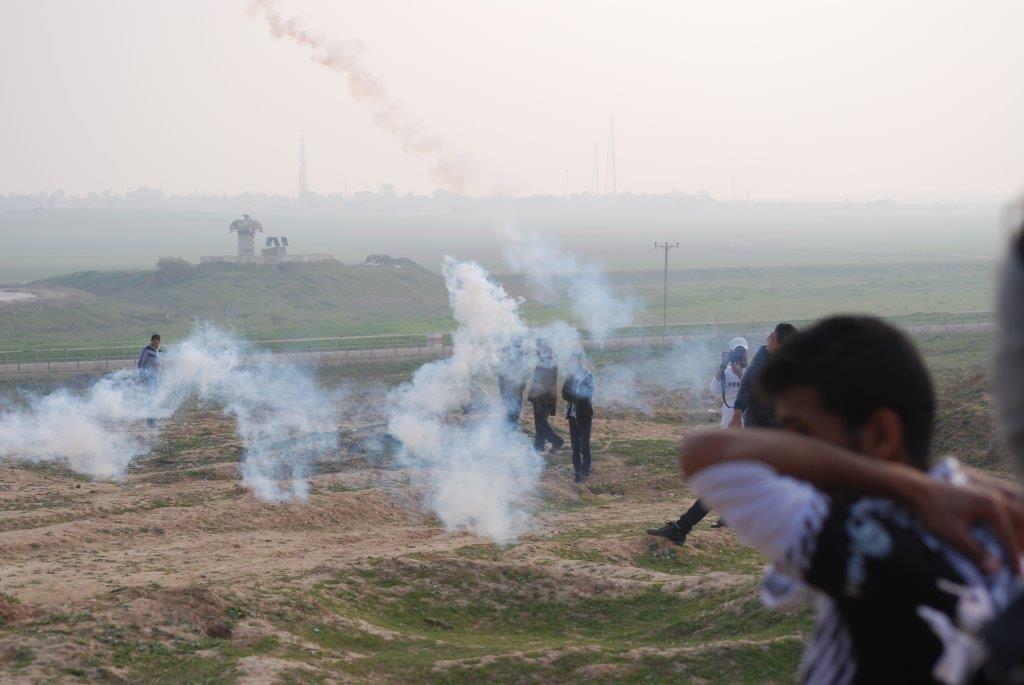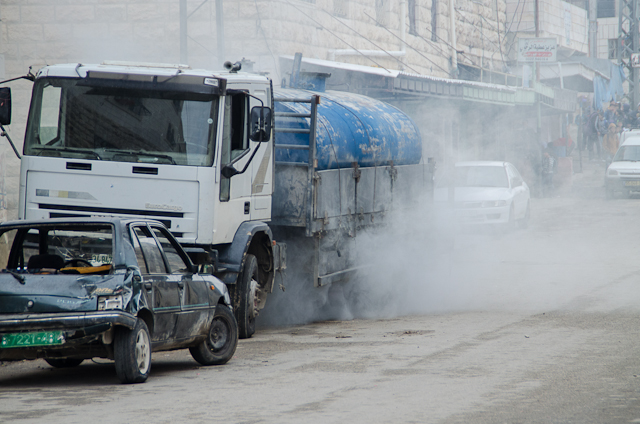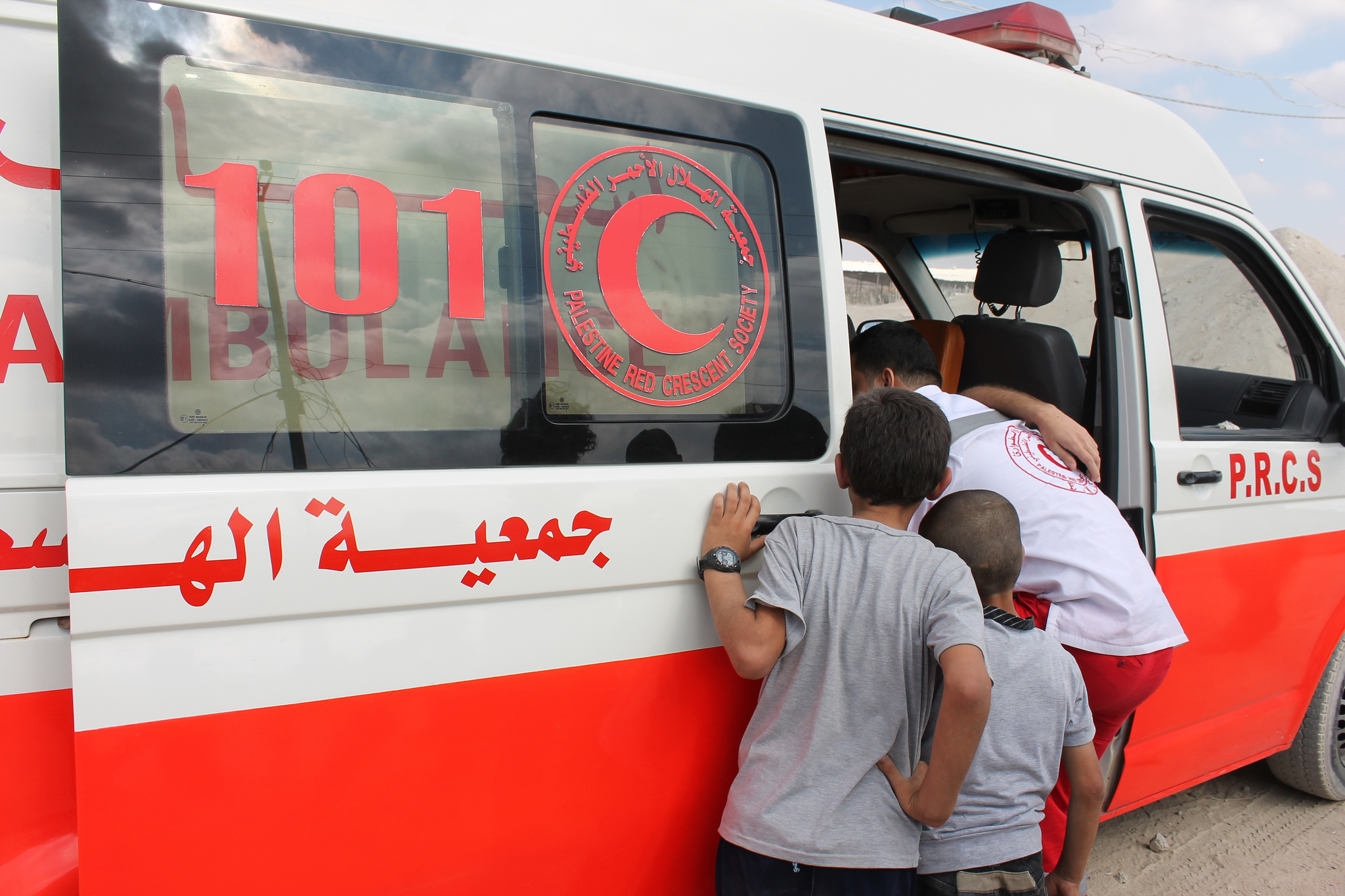-

Video and photos: Israeli forces injure 17 in popular resistance east of Gaza
17th February 2014 | International Solidarity Movement, Charlie Andreasson | Gaza, Occupied Palestine An estimated 400 – 500 people, most in their late teens, gathered at the hillside east of Jabaliya for the recurrent demonstration against the occupation. There was no organizer, leader or banners, and the demonstration was largely chaotic. Stones were thrown, mostly from quite […]
-

Israeli forces use tear gas against schoolchildren in Hebron
16th February 2014 | International Solidarity Movement, Hebron Team | Hebron, Occupied Palestine On Sunday, the 16th of February, Israeli soldiers and border police in Hebron fired tear gas and sound grenades at children on their way to school. The border police also chased the children, attempting to arrest them. At Checkpoint 29, around 7:30 a.m., […]
Action Alert An Nabi Saleh Apartheid Wall Arrests BDS Bethlehem Bil'in Cast Lead Demonstration Denial of Entry Ethnic Cleansing Farmers Gaza Global Actions Hebron House Demolition International law Israeli Army Jerusalem Live Ammunition Nablus Ni'lin Prisoner Ramallah Rubber-coated steel bullets Settlement Settlers Settler violence Tear-Gas Canister Video

